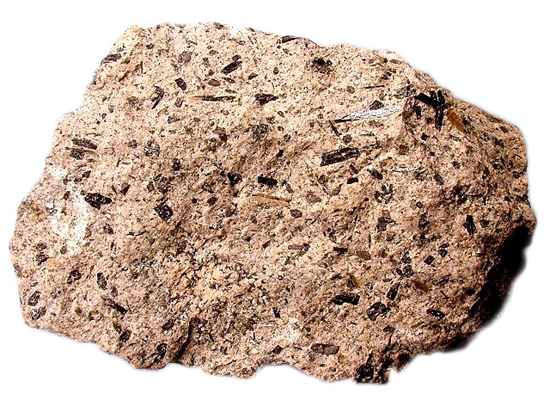INFORMATION ABOUT ANDESITE
WHAT IS ANDESITE?
Andesites are colourful, volcanic surface rocks between rhyolite and basalt in structure. Andesite minerals are consists of plagioclase feldspar minerals. Less amount of andesites are formed by quartz, iron and magnesium minerals which consist of olivine, pyroxene, biotite or hornblende.
The lava forming andesite stones are medium viscocity and dome forming structure with thick lava flows. Andesite get its name from volcanic stones in the Andes Mountains in South America. Andesites are mostly found along continental margins where subduction of ocean tectonic plate.
Andesite stones are more durable than calcium rocks and can be much more easy to handle than other volcanic rocks.

APPLICATION AREAS OF ANDESITE
The most important reason that andesites are prefered in construction industry are their easily processed structures. Andesites are easily processed when they are raw and they are getting harder in manufacturing process thus they are mostly used in areas like paving and flooring materials, cladding materials in outdoor applications. Because andesites are rich in colour, they can also be used in areas like landscaping applications and sectors that produce decorative materials.
Besides usage of andesites as building material in the construction sector; they can also used as aggregates and fillers in industry sector. Because andesites contain high silica in their structure, they are not ideal for concrete filler.
Andesites are widespreadly used from previous times to today in Anatolia for the construction of castles, bridges etc. Some of the nice constructions with andesites are Manisa Ulu Mosque, Manisa Sultan Mosque.
Application Areas
COLOURS OF ANDESITES
Andesites have many colours according to their minerals that they contain. They are mostly found in nature bluish-gray or gray in colours. Beside from the main colours andesites can also be found in red, pink, dark brown, green and yellow in colours.
ANDESITE SURFACE TREATMENT
Because andesites do not get good polish according to their structures; they mostly sold as their raw state.
TYPES OF ANDESITES
Andesites are classified into three types according to the non-feldispat minerals that they contain. First type is the andesites that contain quartz minerals, second types is pyroxene andesites and the third type is biotite and hornblende andesites. All andesites are volcanic stones like granites ( quartz and feldspar ) and they have the same structure between diorites ( igneous rock composed of plagioclase feldspar ) and rhyolites. In other words, andesites contain more feldispat minerals than rhyolites whereas contain less feldispat minerals than diorites.








